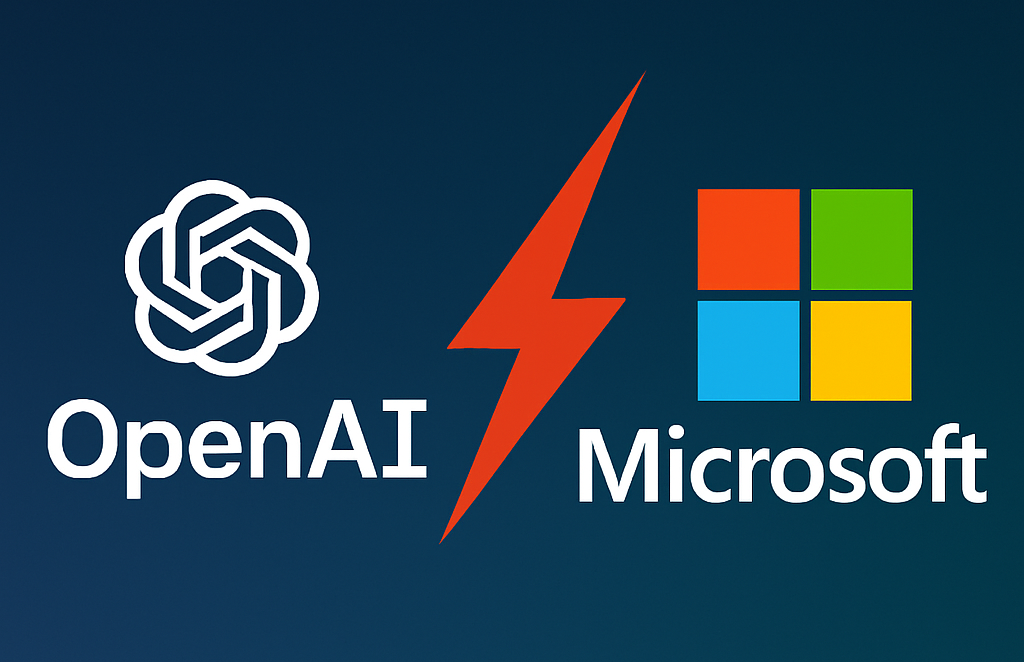A single clause buried in the partnership agreement amongst OpenAI and Microsoft has erupted into a dormant breaking point. Once viewed as hypothetical, this deal trigger has become a source of rising tension between the two tech giants. The problem revolves around Open AI’s ability to announce the creation of Artificial General Intelligence (AGI), a milestone that could limit Microsoft’s access to future technologies.
The OpenAI AGI Clause: What’s at Stake?
Microsoft has poured over $13 billion into OpenAI since their alliance began. In return, it gained classy access to some of the most powerful AI models the world has seen. However, the OpenAI AGI clause could disrupt that. If OpenAI officially announces it has reached AGI, the clause would reduce Microsoft’s contractual rights to its cutting-edge technologies.
This potential limitation has triggered Microsoft to push back. Sources familiar with the matter told the Financial Times that Microsoft is pressing OpenAI to remove or alter the clause. If negotiations fail, Microsoft may walk away from the deal—despite its heavy investment.
Why the AGI Label Matters
OpenAI defines AGI as “a highly autonomous system that outperforms humans at most economically valuable work.” While that goal remains far off by many standards, internal discussions suggest the company is taking the milestone seriously. OpenAI has been developing empirical methods to evaluate AGI progress—methods that are measurable, reproducible, and industry-relevant.
A paper titled “Five Levels of General AI Capabilities” has added complexity to the situation. According to insiders, this internal framework classifies different stages of AI development.Though the document doesn’t qualify as peer-reviewed research, it has sparked internal debate about whether OpenAI is nearing AGI—and if it’s time to make that claim public.
OpenAI spokesperson Lindsay McCallum clarified that the document was “an early attempt at classifying stages and terminology” and not intended as rigorous research.
Microsoft’s Position and OpenAI’s Leverage
Despite the storm brewing, Microsoft has publicly remained silent. Behind closed doors, however, the tech behemoth is reportedly skeptical that OpenAI will reach AGI by 2030—the year their current agreement ends. But from OpenAI’s perspective, the clause offers a powerful bargaining chip. If AGI is declared, OpenAI retains its freedom to renegotiate or even restrict future collaborations.
According to WIRED, Microsoft wants ongoing access to OpenAI’s models regardless of an AGI declaration. The disagreement has intensified during OpenAI’s corporate restructuring efforts, which aim to clarify long-term strategy and legal obligations.
Possible Fallout: Accusations and Antitrust
The tension is no longer theoretical. The Wall Street Journal reported that OpenAI has contemplated using its AI coding agent to trigger the AGI clause. This model, potentially capable of outperforming elite human programmers, could serve as justification for petition the clause.
In response, the companies have even floated the chance of legal retaliation. Reports recommend OpenAI has discussed publicly accusing Microsoft of anticompetitive behavior if the dispute escalates further.
The Bigger Picture: What This Means for AI
At its core, the OpenAI AGI clause exposes a growing rift in the AI industry. As companies race toward artificial general intelligence, legal and ethical frameworks lag behind. The Microsoft–OpenAI standoff serves as a stark reminder: the road to AGI is as political and contractual as it is technological.
Both companies have much to lose. Microsoft has built its Copilot suite and Azure AI services around OpenAI’s models. OpenAI, meanwhile, relies on Microsoft’s infrastructure to deploy its tools at scale. Their partnership transformed the AI ecosystem—but that future now hangs in the balance.
Conclusion
The OpenAI AGI clause has become more than a legal technicality. It’s now a litmus test for how the AI industry will handle the complex transition from narrow to general intelligence. As OpenAI inches closer to its ambitious goals, the tech world watches closely to see whether this high-stakes partnership will endure—or unravel.
Updated By trendtoday360







Leave a Reply